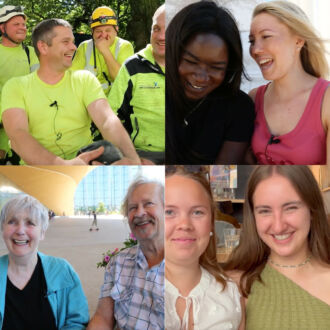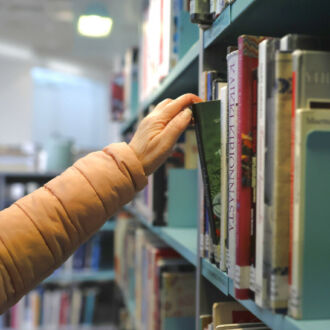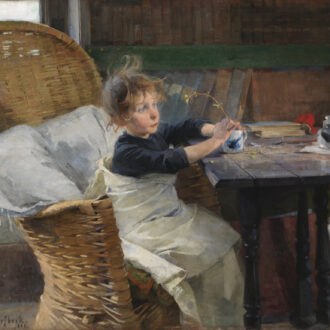Traditional language learning often emphasises written exercises, overlooking the role of movement and emotions. However, research shows that embodied experiences help anchor new words and structures in the brain.
That’s the idea behind Embodied Language Learning through the Arts (ELLA), a Kone Foundation–funded project about how artistic activities enhance second-language acquisition.
“We need ELLA because language pedagogy has to change,” says Eeva Anttila, professor of dance pedagogy at the Theatre Academy of the University of the Arts Helsinki, who led ELLA. “Learning should be fun, motivational and emotionally supportive.”
What’s art got to do with it?
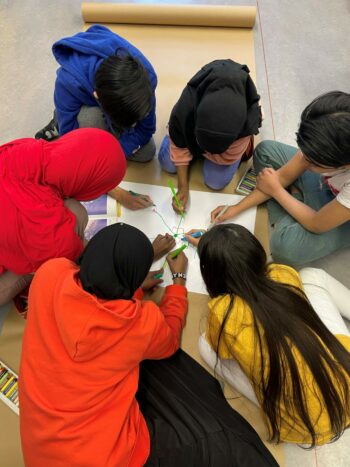
Movement and emotions are deeply connected to cognition, and various activities can contribute to language learning.Photo courtesy of Eeva Anttila
Movement and emotions are deeply connected to cognition. “When learners physically engage with language, they internalise it more deeply,” Anttila says. ELLA promotes a holistic approach, integrating embodiment, artistic expression and language learning, especially in culturally diverse settings.
“Students’ attention spans are short, and the arts help sustain focus long enough for experiences to mature and fulfil their potential. It’s learning by doing – deeper, more impactful.”
ELLA has been introduced in schools, immigrant preparatory classes, high schools, adult education and teacher training. “With ELLA, we aim to fully engage human potential by learning and practising multiple skills simultaneously,” says Anttila. Through activating their senses, emotions and motor skills, learners’ linguistic abilities develop while gaining cultural insights.
One of ELLA’s subprojects, Dans med språk (Swedish for “Dance with language”), introduced spoken-word choreographies in Swedish at a performing arts high school in the central western Finnish city of Tampere. (Swedish is an official language in Finland.)
Open to all, regardless of dance experience or Swedish proficiency, the course is now so popular that it has a waiting list – an impressive feat, as it means significant numbers of Finnish-speaking students are also opting to attend.
Singing your way to fluency
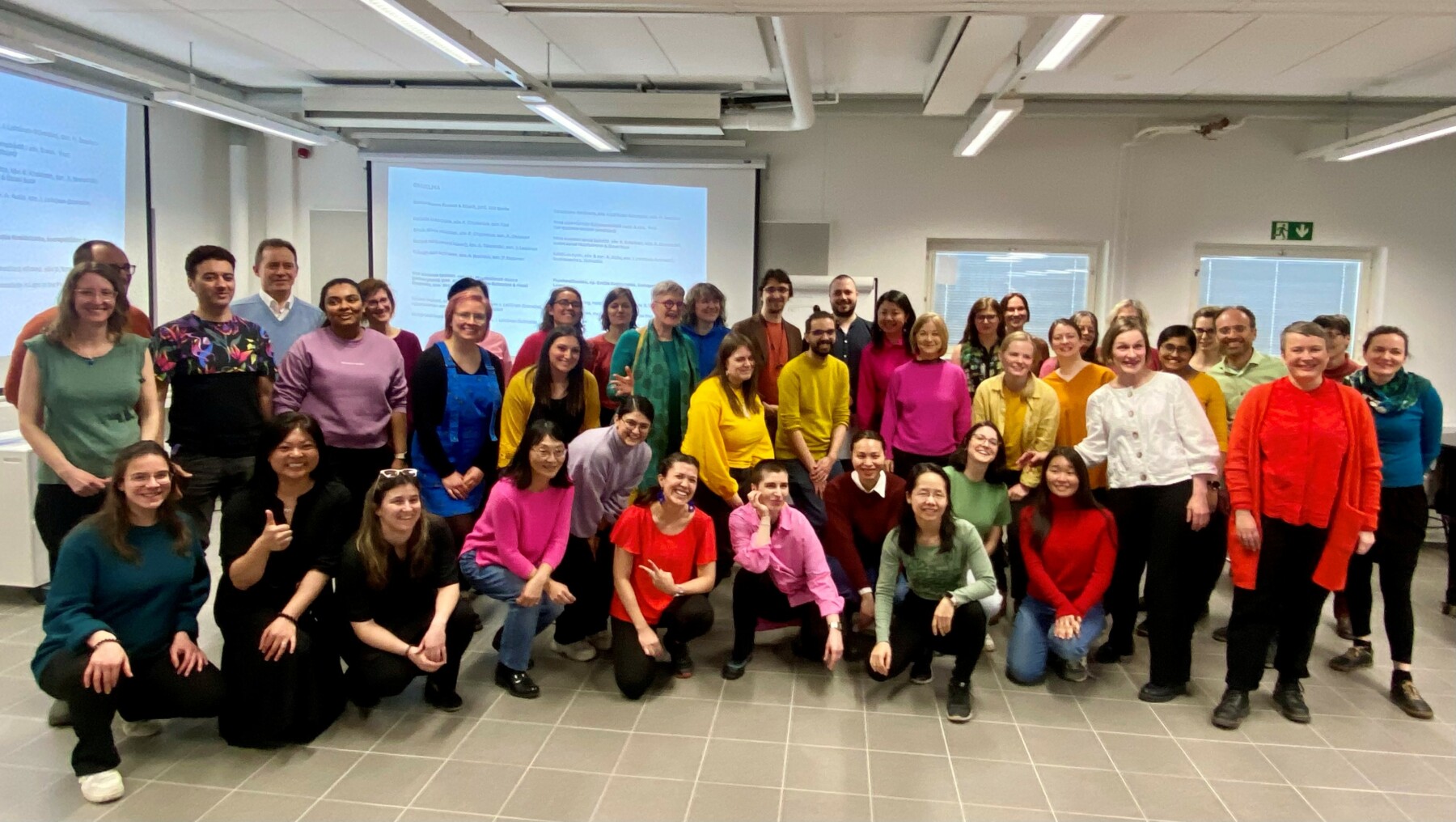
A Learn Finnish by Singing choir: The role singing can play in language learning is a fascinating field that hasn’t been exhaustively studied.Photo courtesy of Johanna Lehtinen-Schnabel
Singing also fast-tracks language learning. An exciting manifestation of ELLA’s philosophy is learning Finnish by singing.
“This is a fascinating transdisciplinary field that has not been studied much,” says Johanna Lehtinen-Schnabel, an ELLA researcher and conductor of the Learn Finnish by Singing choirs in Helsinki and nearby Espoo.
The idea originated from the students of a pilot project in which Lehtinen-Schnabel taught music to adult immigrants. Singing helps learners absorb language production, such as pronunciation, rhythm and intonation, while reducing the fear of making mistakes.
Lehtinen-Schnabel’s doctoral dissertation at the Sibelius Academy of the University of the Arts Helsinki (named after the famous Finnish composer Jean Sibelius), focuses on these language-aware choirs, which embrace genres from pop and rap to folk music, exposing learners to diverse linguistic styles. Incorporating flash mobs, dialects and improvisation, the choirs make language learning an immersive, real-world experience.
“When I sing in the choir, I don’t feel I’m studying,” says choir member Alicia Sevilla. “It’s fun and natural.” She also studies Finnish in a regular course, but credits the choir with improving her fluency and spoken Finnish. Open to all proficiency levels, the choirs require no prior Finnish skills to join.
Unlocking kids’ language skills
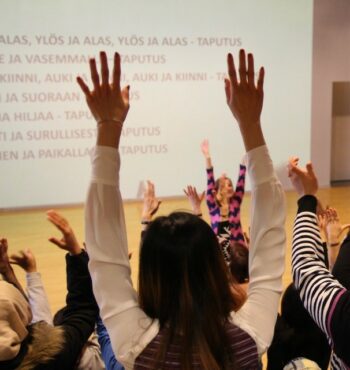
It’s fun and natural to study a language by singing.Photo courtesy of Johanna Lehtinen-Schnabel
Research on embodied language learning has largely focused on adults and young children, with significantly less attention given to adolescents. Elias Girod, a dancer and teacher-in-training, hopes to change this. His University of Helsinki master’s thesis examined embodied learning in second-language teaching within ELLA.
“Pairing words with movement enhances neural connections, making information more memorable and deeply embedded,” he says. This aligns with research showing the deep connection between physical activity and cognition.
For Girod, embodied learning covers a wide range of possibilities, including standing up, sitting on the floor, going outside or simply examining how we use our bodies in different environments. “Language learning is more than grammar,” he says. “It’s about interaction and motivation. Art naturally creates both.”
Finland’s national core curriculum (revised in 2014, with another revision in time for the 2025–26 school year) already emphasises functional and cognitive teaching over formal or rigid instruction, but Girod would like to see further improvements. He argues that, for students who recently moved to Finland, “the priority should be making them feel comfortable and connected.”
He advocates for a more experiential approach, where language is learned through movement, interaction and creative expression rather than isolated drills. “Children should also be taken to performances and exhibitions outside of the school,” he adds, noting the importance of cultural experiences in fostering both language skills and a sense of belonging.
As a practical step, he suggests inviting professional artists into schools for workshops and performances.
Rethinking language education
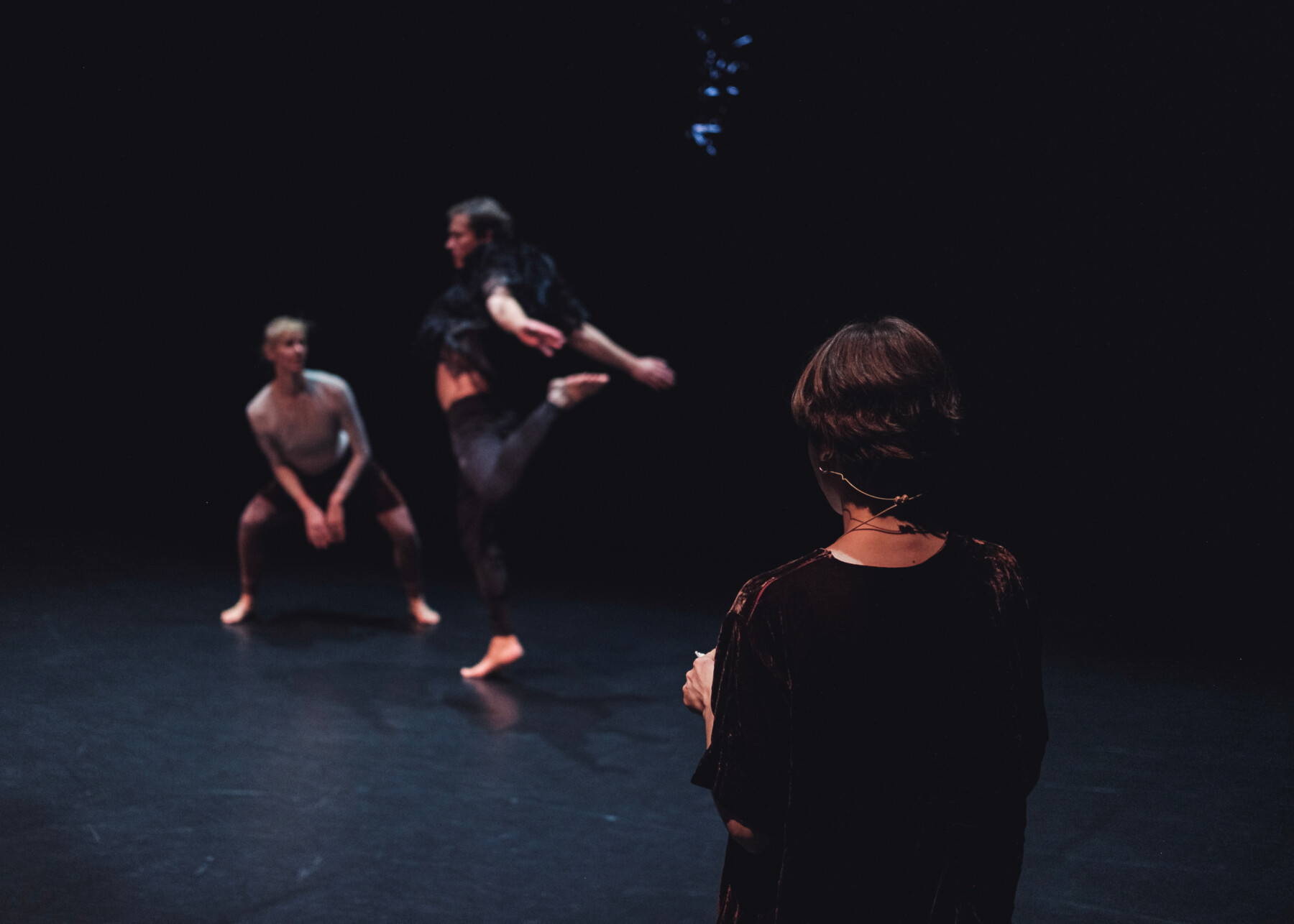
The performance Kunnes avartuu (roughly: “Until expansion”) is a conversation between Veli Lehtovaara’s choreography and poetry written and read aloud by Milka Luhtaniemi (foreground).Photo: Jani Salonen
Girod is critical of the Programme for International Student Assessment (PISA) rankings for measuring only quantifiable subjects and excluding creative subjects. This omission disregards dance, other art forms and the language that enhances them, overlooking their educational value.
ELLA represents a shift in language education, making it dynamic and immersive. Integrating movement, creativity, and human connection fosters linguistic development, confidence, cultural awareness and a sense of belonging.
By Carina Chela, April 2025


